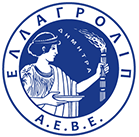- +30 213 003 7600
- +30 213 003 7600
- info@hellagrolip.com
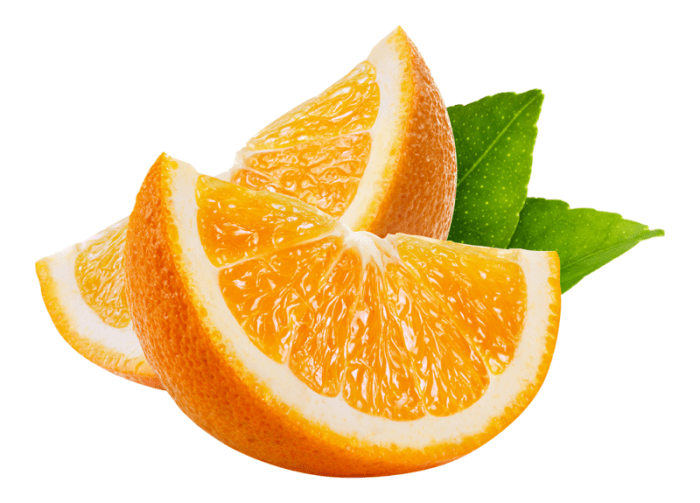
Citrus trees thrive in a variety of soils, from sandy to clay ones. The soils considered ideal are those which are of medium texture, deep, sandy clay or clay sand, permeable, with good drainage, and non-saline.
Firm clay soils should be avoided as they prevent oxygenation and the normal function of the root system, while calcareous soils cause nutritional abnormalities and nutritional deficiencies which inhibit tree growth.
Citrus trees favor a slightly acidic pH, yet they can develop normally and produce excellent yields in a pH range between 6 and 7.5. They thrive in areas with mild, coastal climates, without strong winds and frosts. They show low resistance to cold, with the orange tree being the most resilient, followed by the Tangerine tree, and the Lemon tree coming last.
In order to produce high yields of high quality, citrus trees have high annual nutritional requirements.
An integral fertilization program should cover both the nutrients lost during harvest and those required for sprouting, flowering, and fruit setting. The quantities required annually by the crop in order to produce three tons of produce per hectare (3ΜΤ/ha.) per type of crop are described below.
| Annual nutrient requirements for 3MT per hectare (kg / ha.) | ||||
|---|---|---|---|---|
| Crop | Nitrogen
(N) |
Phosphorus
(P2O5) |
Potassium
(K2O) |
Magnesium
(MgO) |
| Orange | 180 – 240 | 80 – 120 | 180 – 240 | 40 – 60 |
| Mandarin | 160 – 220 | 60 – 100 | 160 – 220 | 30 – 60 |
| Lemon | 180 – 260 | 80 – 120 | 180 – 260 | 40 – 80 |
| Grapefruit | 140 – 180 | 60 – 100 | 160 – 200 | 0 – 20 |

In mid-March, when the temperatures start rising, the spring flash of sprouting begins. During this time, the activity of the root system intensifies and the water and nutrient uptake increases, so that the high requirements of sprouting and flowering are covered.
The flowers become fully grown, are formed on the inflorescences, and the trees enter the stages of flowering and fruit setting. The number of flowers and their fertility is significantly affected by their position on the tree, the load from the previous year, the presence of unharvested fruits, the level of humidity, and the nutritional state of the trees:

After fruit setting, the first stage of fruit growth begins. This growth is the result of cell multiplication of the germinated flower. It is mainly the skin of the fruits developing, while the flesh does not exhibit any significant development. During this time, two waves of fruit shedding occur; the first at the beginning, immediately after fruit shedding (May), and the second at the end (June).
The hormonal balance of the trees, photosynthetic activity of the leaves, adequate supply of water, and regular supply of nutrients are determining factors regarding the height and quality of the production.

During the summer, the fruits store water and the photosynthetic substances produced by the leaves, and they increase in size and weight. The flesh develops at a fast rate while the development of the skin slows down and remains fixed until ripeness. The nutritional condition of the trees, particularly the adequate supply of Nitrogen and Potassium, significantly affects the size and weight of the fruits and contributes to increased yields and better-quality characteristics of the produce.
Nitrogen (Ν) is fundamental to leaf activity and the nutrition of the fruits during this period. However, an exaggerated amount of Nitrogen will delay ripeness, reduce cohesiveness and the juice content of the fruits, and lower the quality of the juice and damage the production.
Potassium (K) significantly increases the size and weight of the fruit, the thickness and resistance of the skin, the acids and vitamin C content of the juice. The addition of Potassium is required at the stage of fast fruit growth. Yet, as is the case with Nitrogen, an excessive amount of Potassium will delay ripeness, reduce the quantity and quality of the juice, and degrade the production.
In the summer months, Phosphorus (Ρ) increases the sugars in the juice, reduces its acidity, and halts the overgrowing of the skin, which is caused by Nitrogen and Potassium. It also contributes to the creation of “storage” substances, which the trees will use to get a good start the following year.

The development of the fruit is complete, by turning a large part of the contained acids into sugars and replacing the chlorophyll in the skin with carotenoids and xanthophylls. During this time, the surplus of storage substances produced by the leaves is stored in the trunk in order to be used during sprouting the following year, while the consumption of nutrients in minimized when temperatures drop.
Basic fertilization takes place near the end of winter, so that all the nutrients are available to the trees when sprouting begins and the requirements of flowering and fruit setting can be covered.
The supply at this stage is:
In basic fertilization, Nitrogen should be provided in its Ammoniacal form, so that losses to the deeper strata of the soil are avoided and it is available to trees during sprouting and the reproductive phase.
The fertilizers recommended for use are stabilized fertilizers (NutrActive), as they protect Ammoniacal Nitrogen and ensure crop growth for longer periods of time, or complex multi-nutrient fertilizers with nanopolymer technology (Ωmega fert), which prevent the immobilization of nutrients in the soil and ensure the nutritional sufficiency of the trees in all the critical stages of vegetation, flowering and fruit development.
| Citrus fertilizing | ||
|---|---|---|
| Type of Fertilizer | Stage of application | Dosage per tree |
NutrActive special 12-12-17 (+30) +2MgO +TE | Basic fertilization | 2 – 3 kg |
* The dosages mentioned are indicative. Regarding the fertilizing of crops, one should take into account the advice of local agronomists.
It is done near June, when fruit setting and the first flash of fruit shedding following it have finished, while the diameter of the fruits is at least 5mm (late May – June).
The supply at this stage is:
Exaggerated Nitrogen supply should be avoided, as it leads to excessive vegetative growth at the expense of fruiting, which in turn leads to significant shedding, as well as the formation of a thick and rough skin, at the expense of the flesh.
Phosphorus and Potassium balance the negative effect of excessive Nitrogen and promote healthy skin formation. In addition to the necessary supply of Nitrogen and Potassium through the ground, additional foliar applications of Calcium Nitrate and Potassium Nitrate have a positive effect on the quantity of the produce and the quality of the fruits.
Depending on the type of citrus fruit and their early ripeness, it is applied from mid-July to mid-August in order to increase the size and weight of the fruits and improve their qualitative characteristics.
The supply at this stage is:
The use of highly soluble multinutrient fertilizers (Complefert) provides the trees with fully assimilable nutrients, increases the size and weight of the fruits, and improves the qualitative characteristics of the production.
| Citrus fertilizing | ||
|---|---|---|
| Type of Fertilizer | Stage of application | Dosage per tree |
NutrActive 27N 27-0-0 (+27) | Top-dressing (May – June) | 1 – 2 kg / Tree |
Complefert blue-star 12-12-17 (+30) +2MgO +TE | Top-dressing (Jul. – Aug.) | 1 – 2 kg / Tree |
* The dosages mentioned are indicative. Regarding the fertilizing of crops, one should take into account the advice of local agronomists.
| Basic fertilization
(February) |
At the beginning of fruit setting
(May – June) |
Fruit growth
(July) |
|
|---|---|---|---|
| Citrus | Complefert® Ωmega fert® NutrActive® |
NutrActive® Novacan stabil® Complefert® Fertammon® Nitrocan® – Nutrammon® |
Complefert® |
Basic fertilizers
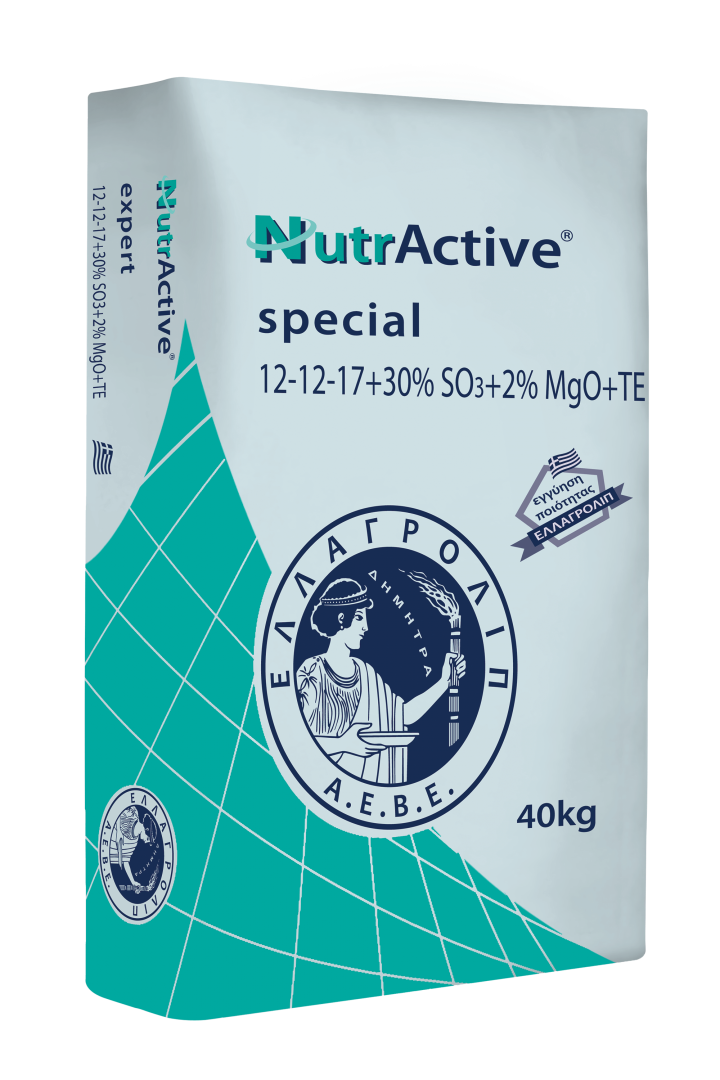
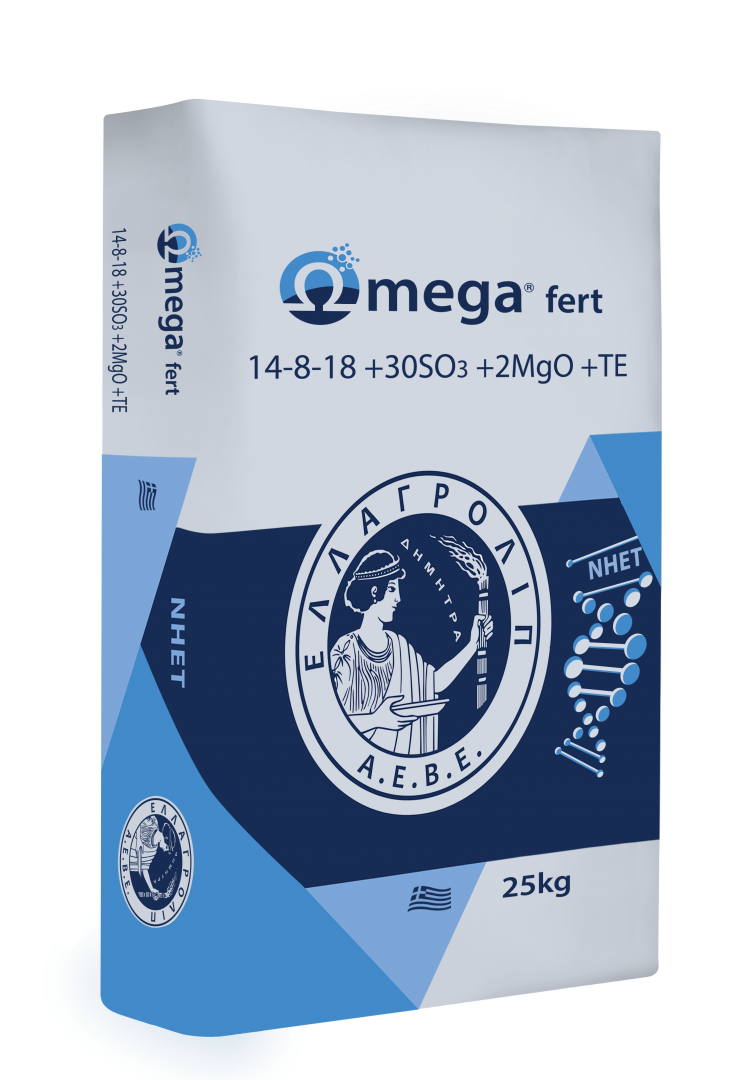
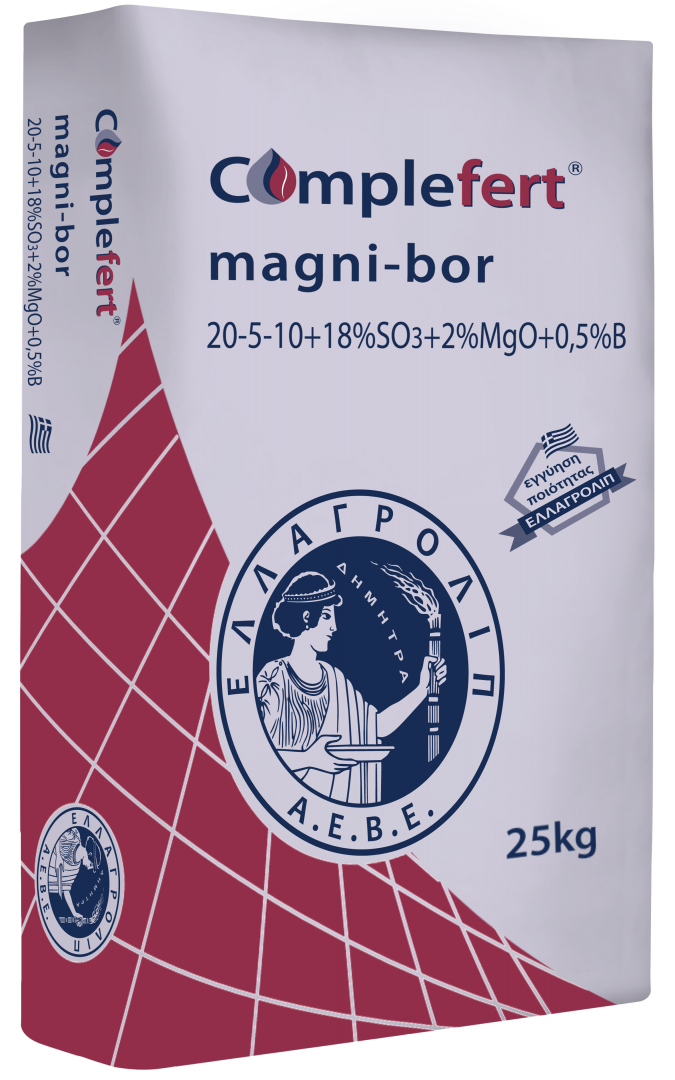
Top-dressing fertilizers
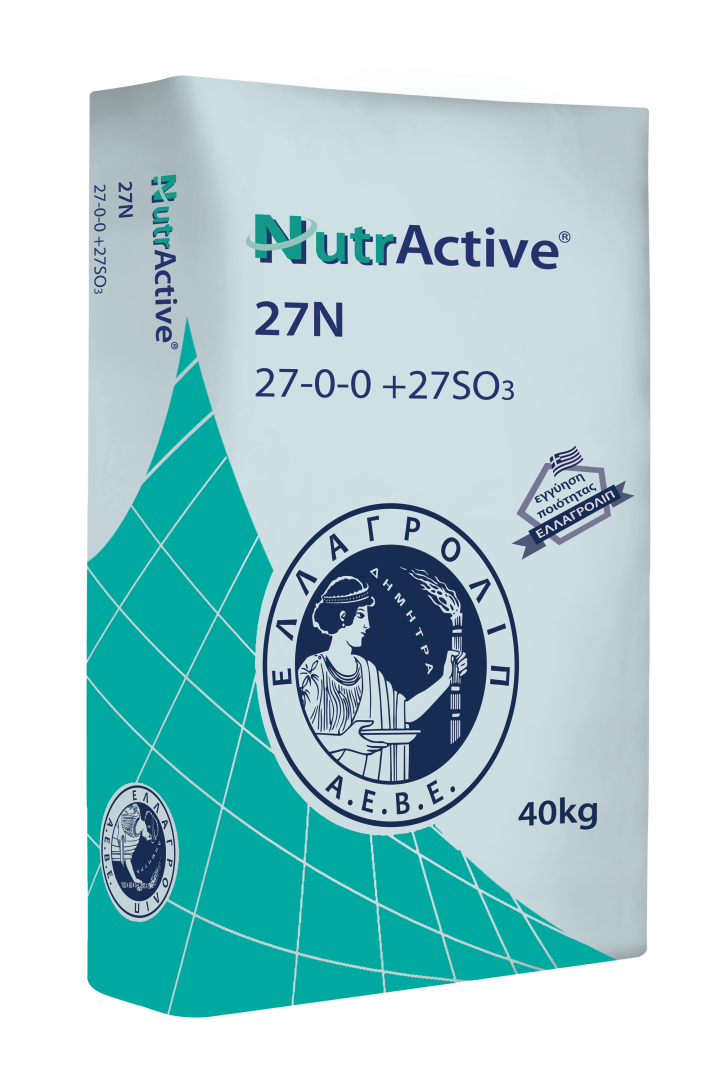
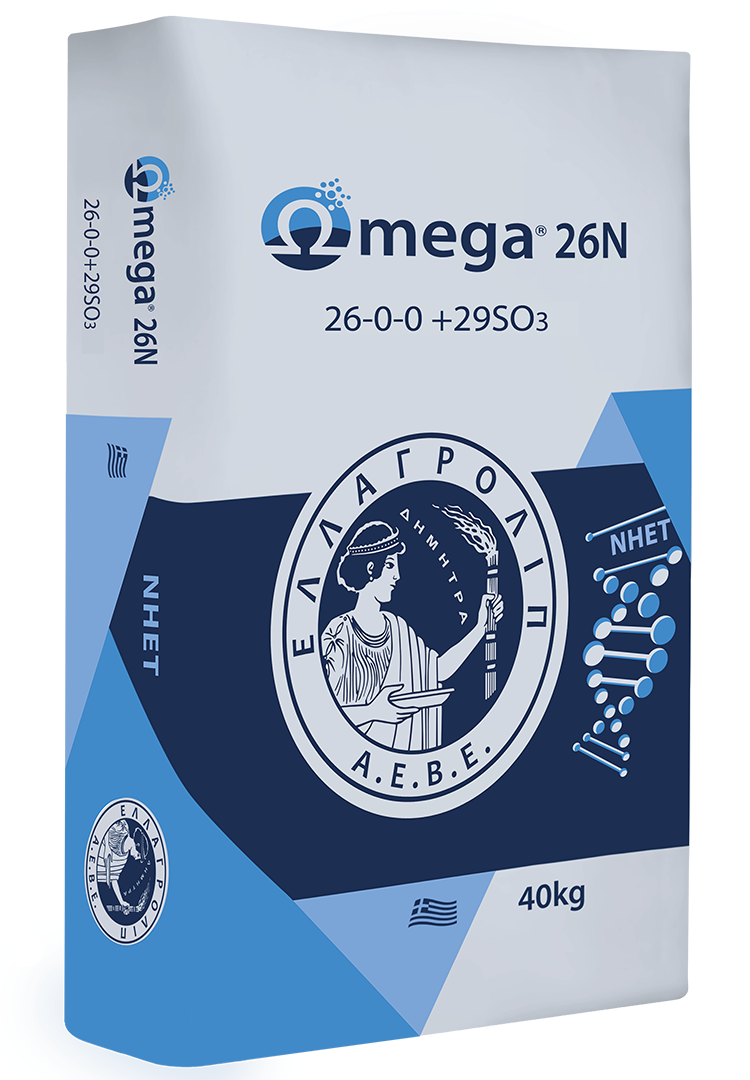
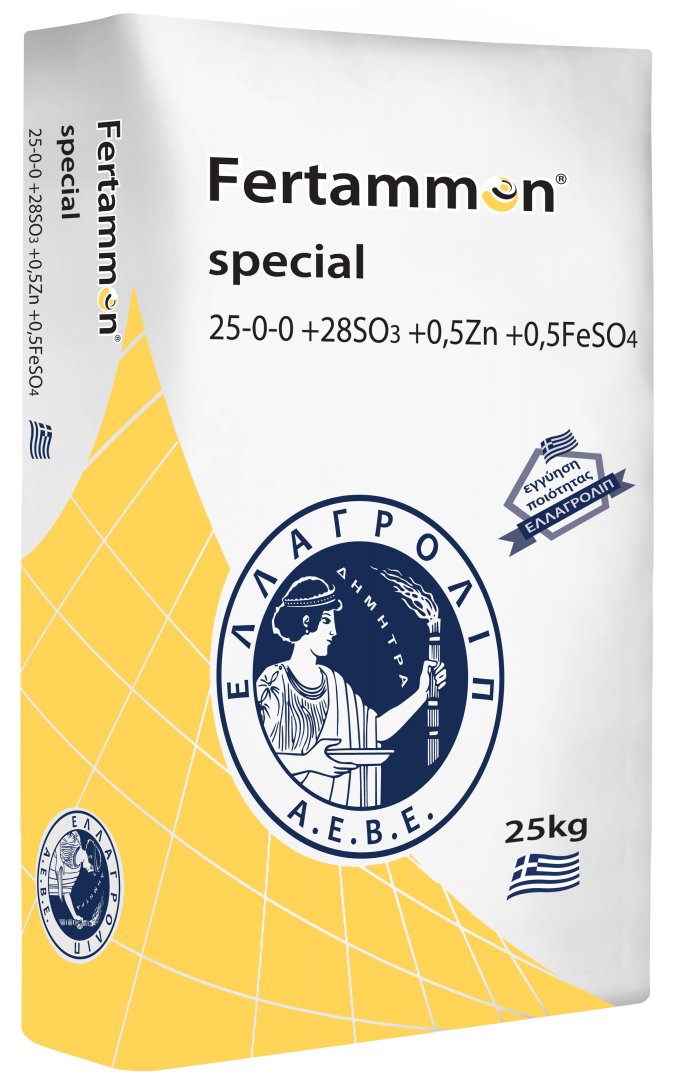
Citrus trees thrive in a variety of soils, from sandy to clay ones. The soils considered ideal are those which are of medium texture, deep, sandy clay or clay sand, permeable, with good drainage, and non-saline.
Firm clay soils should be avoided as they prevent oxygenation and the normal function of the root system, while calcareous soils cause nutritional abnormalities and nutritional deficiencies which inhibit tree growth.
Citrus trees favor a slightly acidic pH, yet they can develop normally and produce excellent yields in a pH range between 6 and 7.5. They thrive in areas with mild, coastal climates, without strong winds and frosts. They show low resistance to cold, with the orange tree being the most resilient, followed by the Tangerine tree, and the Lemon tree coming last.
In order to produce high yields of high quality, citrus trees have high annual nutritional requirements.
An integral fertilization program should cover both the nutrients lost during harvest and those required for sprouting, flowering, and fruit setting. The quantities required annually by the crop in order to produce three tons of produce per hectare (3ΜΤ/ha.) per type of crop are described below.
| Annual nutrient requirements for 3MT per hectare (kg / ha.) | ||||
|---|---|---|---|---|
| Crop | Nitrogen
(N) |
Phosphorus
(P2O5) |
Potassium
(K2O) |
Magnesium
(MgO) |
| Orange | 180 – 240 | 80 – 120 | 180 – 240 | 40 – 60 |
| Mandarin | 160 – 220 | 60 – 100 | 160 – 220 | 30 – 60 |
| Lemon | 180 – 260 | 80 – 120 | 180 – 260 | 40 – 80 |
| Grapefruit | 140 – 180 | 60 – 100 | 160 – 200 | 0 – 20 |

In mid-March, when the temperatures start rising, the spring flash of sprouting begins. During this time, the activity of the root system intensifies and the water and nutrient uptake increases, so that the high requirements of sprouting and flowering are covered.
The flowers become fully grown, are formed on the inflorescences, and the trees enter the stages of flowering and fruit setting. The number of flowers and their fertility is significantly affected by their position on the tree, the load from the previous year, the presence of unharvested fruits, the level of humidity, and the nutritional state of the trees:

After fruit setting, the first stage of fruit growth begins. This growth is the result of cell multiplication of the germinated flower. It is mainly the skin of the fruits developing, while the flesh does not exhibit any significant development. During this time, two waves of fruit shedding occur; the first at the beginning, immediately after fruit shedding (May), and the second at the end (June).
The hormonal balance of the trees, photosynthetic activity of the leaves, adequate supply of water, and regular supply of nutrients are determining factors regarding the height and quality of the production.

During the summer, the fruits store water and the photosynthetic substances produced by the leaves, and they increase in size and weight. The flesh develops at a fast rate while the development of the skin slows down and remains fixed until ripeness. The nutritional condition of the trees, particularly the adequate supply of Nitrogen and Potassium, significantly affects the size and weight of the fruits and contributes to increased yields and better-quality characteristics of the produce.
Nitrogen (Ν) is fundamental to leaf activity and the nutrition of the fruits during this period. However, an exaggerated amount of Nitrogen will delay ripeness, reduce cohesiveness and the juice content of the fruits, and lower the quality of the juice and damage the production.
Potassium (K) significantly increases the size and weight of the fruit, the thickness and resistance of the skin, the acids and vitamin C content of the juice. The addition of Potassium is required at the stage of fast fruit growth. Yet, as is the case with Nitrogen, an excessive amount of Potassium will delay ripeness, reduce the quantity and quality of the juice, and degrade the production.
In the summer months, Phosphorus (Ρ) increases the sugars in the juice, reduces its acidity, and halts the overgrowing of the skin, which is caused by Nitrogen and Potassium. It also contributes to the creation of “storage” substances, which the trees will use to get a good start the following year.

The development of the fruit is complete, by turning a large part of the contained acids into sugars and replacing the chlorophyll in the skin with carotenoids and xanthophylls. During this time, the surplus of storage substances produced by the leaves is stored in the trunk in order to be used during sprouting the following year, while the consumption of nutrients in minimized when temperatures drop.
Basic fertilization takes place near the end of winter, so that all the nutrients are available to the trees when sprouting begins and the requirements of flowering and fruit setting can be covered.
The supply at this stage is:
In basic fertilization, Nitrogen should be provided in its Ammoniacal form, so that losses to the deeper strata of the soil are avoided and it is available to trees during sprouting and the reproductive phase.
The fertilizers recommended for use are stabilized fertilizers (NutrActive), as they protect Ammoniacal Nitrogen and ensure crop growth for longer periods of time, or complex multi-nutrient fertilizers with nanopolymer technology (Ωmega fert), which prevent the immobilization of nutrients in the soil and ensure the nutritional sufficiency of the trees in all the critical stages of vegetation, flowering and fruit development.
| Citrus fertilizing | ||
|---|---|---|
| Type of Fertilizer | Stage of application | Dosage per tree |
NutrActive special 12-12-17 (+30) +2MgO +TE | Basic fertilization | 2 – 3 kg |
* The dosages mentioned are indicative. Regarding the fertilizing of crops, one should take into account the advice of local agronomists.
It is done near June, when fruit setting and the first flash of fruit shedding following it have finished, while the diameter of the fruits is at least 5mm (late May – June).
The supply at this stage is:
Exaggerated Nitrogen supply should be avoided, as it leads to excessive vegetative growth at the expense of fruiting, which in turn leads to significant shedding, as well as the formation of a thick and rough skin, at the expense of the flesh.
Phosphorus and Potassium balance the negative effect of excessive Nitrogen and promote healthy skin formation. In addition to the necessary supply of Nitrogen and Potassium through the ground, additional foliar applications of Calcium Nitrate and Potassium Nitrate have a positive effect on the quantity of the produce and the quality of the fruits.
Depending on the type of citrus fruit and their early ripeness, it is applied from mid-July to mid-August in order to increase the size and weight of the fruits and improve their qualitative characteristics.
The supply at this stage is:
The use of highly soluble multinutrient fertilizers (Complefert) provides the trees with fully assimilable nutrients, increases the size and weight of the fruits, and improves the qualitative characteristics of the production.
| Citrus fertilizing | ||
|---|---|---|
| Type of Fertilizer | Stage of application | Dosage per tree |
NutrActive 27N 27-0-0 (+27) | Top-dressing (May – June) | 1 – 2 kg / Tree |
Complefert blue-star 12-12-17 (+30) +2MgO +TE | Top-dressing (Jul. – Aug.) | 1 – 2 kg / Tree |
* The dosages mentioned are indicative. Regarding the fertilizing of crops, one should take into account the advice of local agronomists.
| Basic fertilization
(February) |
At the beginning of fruit setting
(May – June) |
Fruit growth
(July) |
|
|---|---|---|---|
| Citrus | Complefert® Ωmega fert® NutrActive® |
NutrActive® Novacan stabil® Complefert® Fertammon® Nitrocan® – Nutrammon® |
Complefert® |
Basic fertilizers



Top-dressing fertilizers



